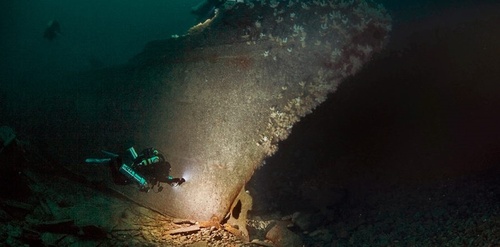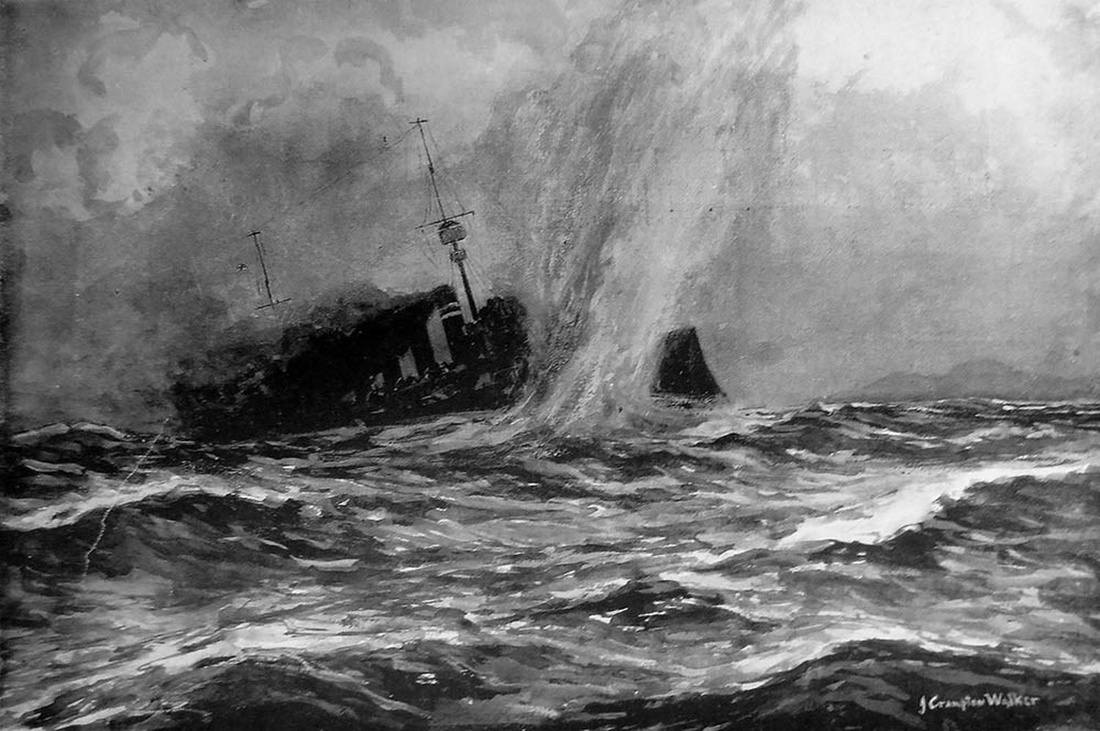Auction: 22003 - Orders, Decorations and Medals
Lot: 368
5 JUNE 1916: LOSS OF THE "HAMPSHIRE"
A poignant Great War campaign pair awarded to Signalman W. J. Kimber, Royal Naval Volunteer Reserve, who was among those lost when H.M.S. Hampshire struck a mine off the Orkneys on 5 June 1916
With the demise of Field Marshal Earl Kitchener - the Secretary of State for War - on the same occasion, Hampshire's loss stunned the nation, led to heated debates in the Houses of Parliament and became the subject of all manner of conspiracy theories
But for the parents of the 18-year-old signalman - William and Lavenia Kimber of Peckham, London - the truth was of a more immediate nature
British War and Victory Medals (L.Z. 4346 W. J. Kimber, Sig., R.N.V.R.), good very fine (2)
William John Kimber was born in Peckham, London on 28 October 1897 and joined the Royal Naval Volunteer Reserve in November 1915. Drafted to the 4th Battalion, Royal Naval Division, he was quickly transferred to regular naval service and, having attended a Signal School, joined H.M.S. Hampshire on 19 May 1916.
Hampshire departed Scapa Flow immediately after the battle of Jutland, with Earl Kitchener embarked on a secret diplomatic mission to Russia. She encountered heavy seas, lost her destroyer escort and, on reaching the area of Marwick Head, about a mile and half off the mainland of Orkney, struck one of several mines that had earlier been laid by the U-75; the crew had been settling into their normal seagoing routine and Kitchener was below in the captain's cabin.
Subsequent events are summarised on the 'Scottish Wreck' website:
'It was around 8.30 p.m. Suddenly the ship was rocked by a loud explosion and almost immediately she was plunged into total darkness as all electrical power failed. Survivors later described the acrid smell of fumes from the exploding mine which permeated the sinking ship as the crew scrambled through the darkness in an attempt to save themselves. The terrifying roar of rushing water could be heard throughout most of the ship. The crew knew instantly that their ship was doomed and that their own chances of survival in the cold, angry seas off Orkney were slim. However, discipline was maintained as the crew rushed to their muster stations and waited the command to abandon ship. Some of the survivors recalled seeing Kitchener on deck before she went down but he and his staff were to perish that night along with the vast majority of the ship's crew of more than six hundred.
The mine had struck on the port side at the forward engine room and had ripped a huge hole in the bottom of the ship. With water quickly filling this huge space the building pressure rapidly smashed the engine room bulkhead and the Hampshire was doomed. The devastation in the engine room itself was appalling with most of the crew in the area killed instantly by the explosion. Elsewhere on the ship the crew flooded the magazine to avoid further explosions while they desperately tried to reach the comparative safety of the deck. However, once on deck the situation was little better. The larger lifeboats could not be launched as they were lowered by electrically powered winches and all power had been lost. A few smaller boats were launched but were immediately smashed against the side of the ship or overturned in the heavy swell throwing their occupants into the boiling sea. The most effective rescue devices were the huge cork Carley floats which were simply hurled into the sea. Many survivors clambered aboard these simple structures. The few seamen who reached the safety of the Carley floats looked back in awe as the huge ship reared her stern high in the air and sank by the bow.
Ashore on Orkney a few islanders actually witnessed the explosion and watched in horror as the huge ship plunged to the seabed. The alarm was raised and a message sent to Stromness. Later, there was considerable controversy over the apparent delays in the rescue efforts. The lifeboat at Stromness was not called out though it must be questionable if it could have reached the area in the dreadful sea conditions that night. In the end it was 9.45 p.m. before the ocean-going tug Flying Kestrel and the trawlers Northward and Renzo put to sea. Over the next few hours many other ships were sent to the scene but it was too late. These ships did not pick up a single survivor.'
Of the 655 crew and seven passengers aboard, only 12 managed to reach shore on Carley floats; Kimber and Kitchener were not among them.
Postscript
Diving on the wreck is forbidden under U.K. law, but to mark the 100th anniversary of the Hampshire's loss in June 2016, the Ministry of Defence granted a Licence to a diving team - under Rod Macdonald - to put together a specialist team to record the wreck for posterity using stills, video, 3D photogrammetry and Virtual Reality. The results were deeply poignant.
Subject to 20% VAT on Buyer’s Premium. For more information please view Terms and Conditions for Buyers.
Sold for
£230
Starting price
£110









